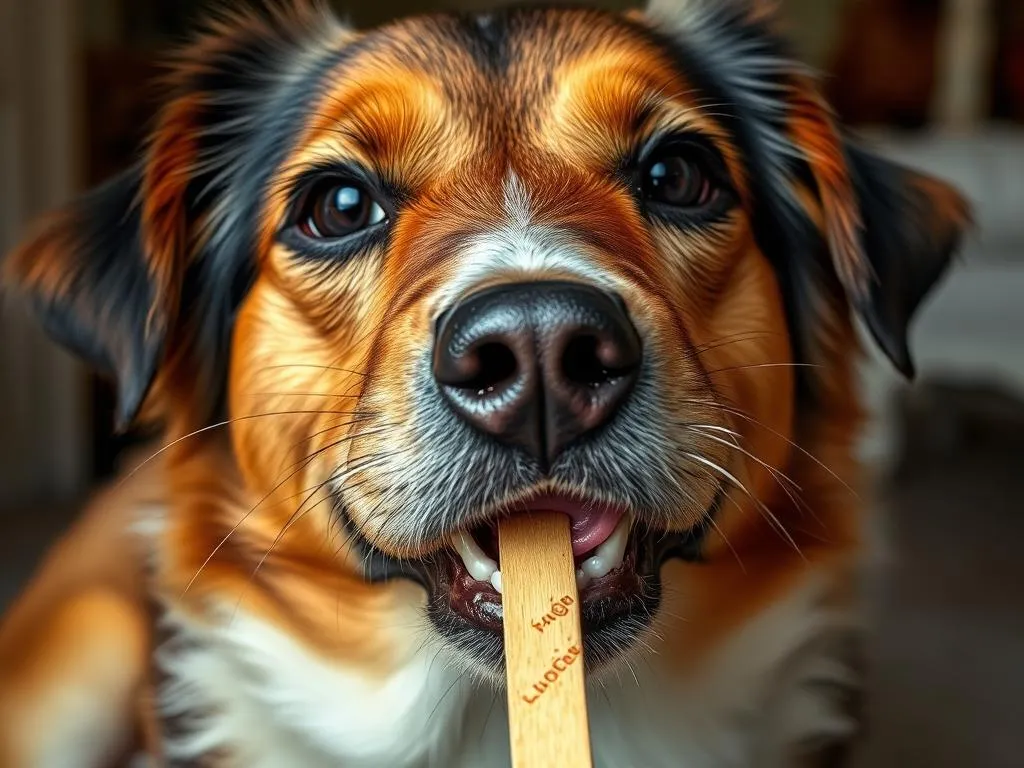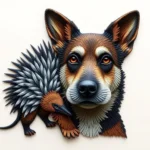
Dogs are known for their curious nature, often leading them to chew on non-food items around the house. One such scenario that can raise alarm is when your beloved pet decides to snack on a popsicle stick. Understanding the potential health risks associated with dogs ingesting foreign objects is crucial for every pet owner. This article will guide you through the implications of this situation, what steps to take immediately, and how to prevent similar incidents in the future.
Understanding the Issue
Common Reasons Dogs Chew on Foreign Objects
Dogs have a natural instinct to chew. This behavior can stem from various reasons, including boredom, anxiety, or teething in younger dogs. Chewing is a way for them to explore their environment and relieve stress or discomfort. Unfortunately, this natural tendency can lead them to put inappropriate items in their mouths, such as popsicle sticks.
What Happens When a Dog Eats a Popsicle Stick?
Popsicle sticks are made of wood, which poses specific risks if ingested. When a dog chews on a popsicle stick, it can splinter, creating sharp edges that may cause injuries in the mouth, throat, or digestive tract. The potential risks associated with ingestion include:
- Splintering: Sharp pieces can cause lacerations.
- Choking Hazards: Larger pieces may get stuck in the throat.
- Internal Injuries: Sharp edges can puncture the intestines or stomach lining, leading to serious complications.
Understanding these risks is vital in assessing whether your dog is in danger after consuming a popsicle stick.
Immediate Steps to Take
Assessing the Situation
If you’ve caught your dog in the act of chewing on a popsicle stick, it’s essential to remain calm. Take a moment to assess your dog’s condition. Look for signs like lethargy, vomiting, or changes in appetite. These may indicate that your dog is experiencing discomfort or pain.
When to Contact a Veterinarian
It’s important to know when to seek veterinary care. If your dog exhibits any of the following symptoms after eating a popsicle stick, you should contact your vet immediately:
- Persistent vomiting
- Difficulty swallowing
- Excessive drooling
- Abdominal pain or bloating
- Blood in stool or vomit
When calling your veterinarian, provide them with as much detail as possible about the incident, including the size of the popsicle stick and any symptoms your dog is showing.
Veterinary Examination and Diagnosis
What to Expect at the Vet
When you bring your dog to the vet, the veterinarian will conduct a thorough examination. This typically includes:
- Physical Exam: Assessing your dog for pain and signs of distress.
- X-rays: Imaging may be necessary to determine if there are any blockages or injuries in the digestive tract.
Treatment Options
Depending on the severity of the situation, treatment options can vary:
- Monitoring: If there are no immediate symptoms, the vet may suggest monitoring your dog for a few days.
- Endoscopy: In some cases, an endoscopy may be performed to remove the popsicle stick if it is lodged in the throat or stomach.
- Surgery: If there are serious internal injuries or blockages, surgery may be necessary to prevent further complications.
The treatment decision will depend on your dog’s overall health and the specific circumstances of the ingestion.
Prevention Strategies
Training and Behavior Modification
Preventing your dog from chewing on inappropriate items is an essential part of pet ownership. Here are a few tips:
- Teach Commands: Use commands like “leave it” or “drop it” to discourage unwanted chewing.
- Provide Appropriate Chew Toys: Offer safe and durable chew toys to satisfy your dog’s instinct to chew. This can help redirect their attention away from harmful objects.
Environmental Management
Making your home dog-proof can significantly reduce the chances of your dog ingesting foreign objects:
- Secure Food Items: Keep food and trash bins out of reach.
- Regular Cleaning: Regularly pick up items that may be tempting for your dog.
- Designate Safe Play Areas: Create specific zones where your dog can play safely without access to hazardous items.
Long-Term Health Considerations
Monitoring for Future Incidents
Keeping a close eye on your dog’s behavior can help prevent future incidents. Regular check-ups with your veterinarian can catch potential health issues early, and behavioral assessments can help determine if your dog needs more engagement or training.
Nutritional and Lifestyle Factors
A well-balanced diet can play a role in your dog’s chewing habits. Here are some considerations:
- Diet: Ensure your dog is getting the right nutrients, as deficiencies can lead to odd chewing behaviors.
- Physical and Mental Stimulation: Engage your dog with regular exercise and mental challenges to reduce boredom and anxiety-driven chewing.
Conclusion
Understanding the implications of your dog eating a popsicle stick is crucial for their health and safety. By being aware of the signs to watch for, knowing when to contact a veterinarian, and implementing effective prevention strategies, you can keep your furry friend safe from harm. Remember, if you ever feel uncertain about your dog’s health or behavior, consulting with a veterinarian is always the best course of action. Your vigilance and proactive measures can make a significant difference in ensuring a happy and healthy life for your dog.









